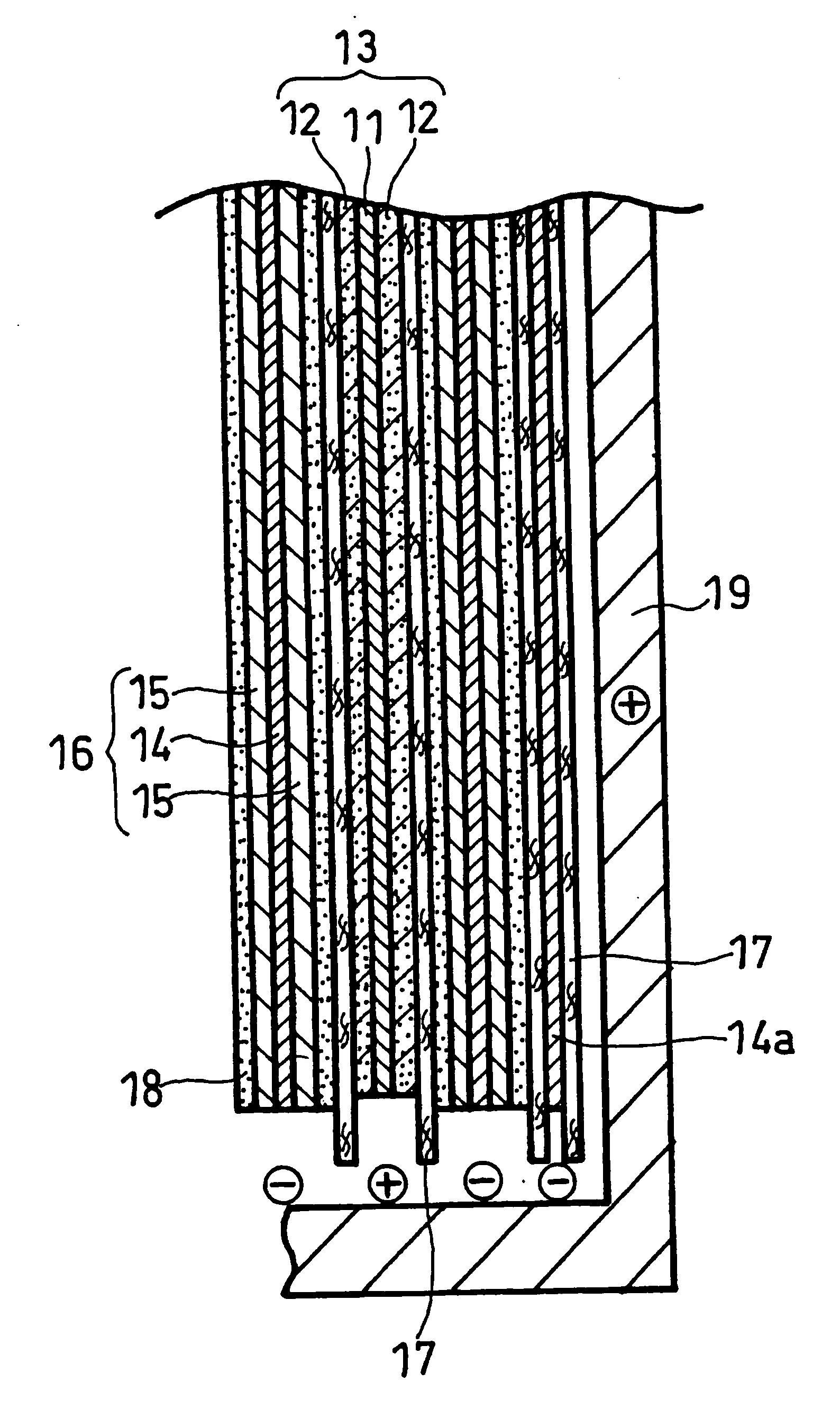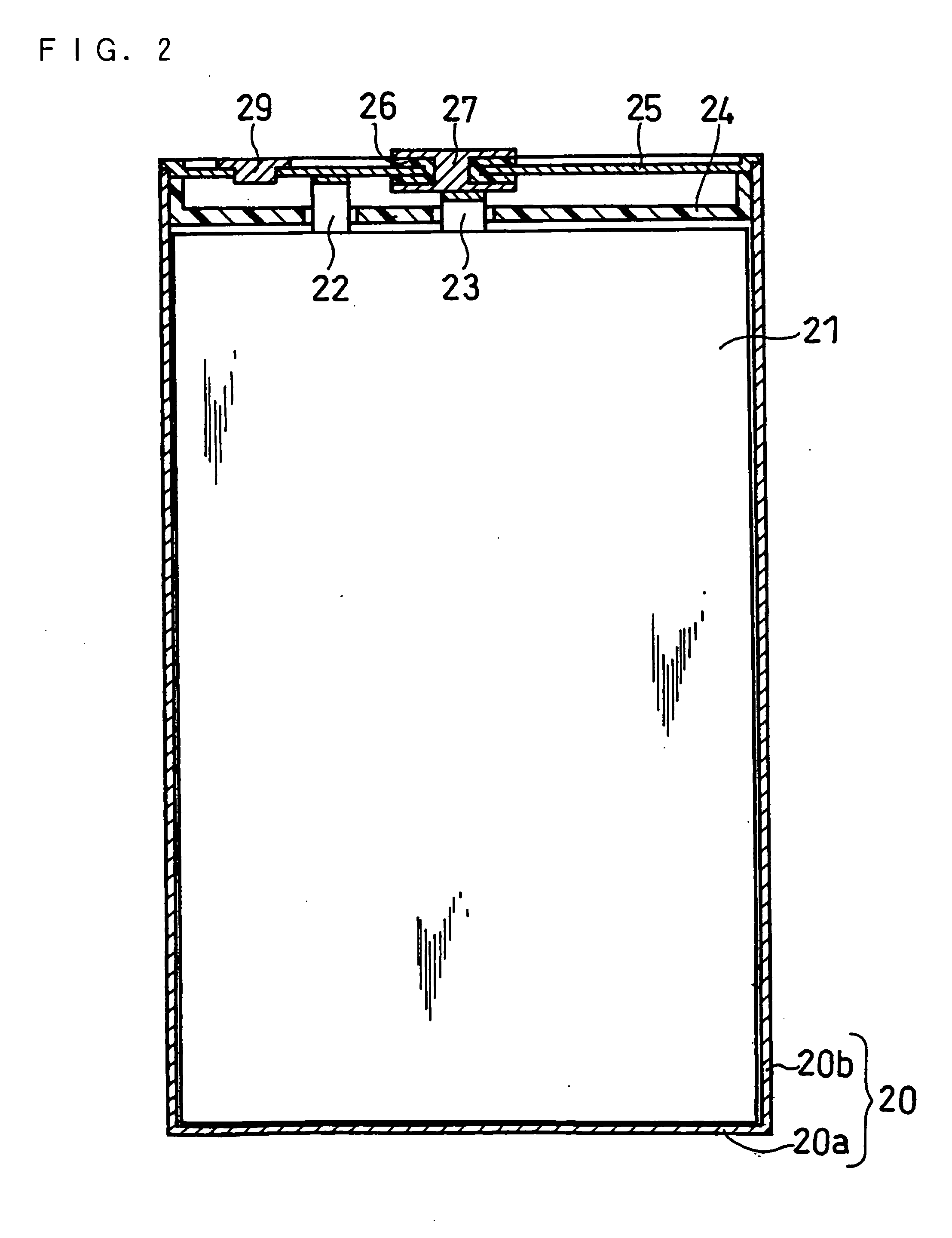Prismatic lithium secondary battery
a lithium secondary battery and lithium-ion battery technology, applied in the direction of cell components, final product manufacturing, sustainable manufacturing/processing, etc., can solve the problems of internal short circuit, overheating of the battery, shrinkage of the separator made of a micro-porous film, etc., and achieve excellent battery characteristics and safety.
- Summary
- Abstract
- Description
- Claims
- Application Information
AI Technical Summary
Benefits of technology
Problems solved by technology
Method used
Image
Examples
example 1
(Battery 1)
(i) Preparation of Positive Electrode
[0043] A positive electrode mixture paste was prepared by stirring 3 kg of lithium cobaltate, 1 kg of PVDF#1320 available from KUREHA CORPORATION (N-methyl-2-pyrrolidone (hereinafter referred to as NMP) solution containing 12% by weight of PVDF), 90 g of acetylene black, and a suitable amount of NMP with a double-arm kneader. This paste was applied onto both sides of a positive electrode core member comprising a 15-μm-thick aluminum foil, dried, and rolled, to form a positive electrode with positive electrode active material layers. This positive electrode had a total thickness of 130 μm. The positive electrode was cut to a strip with a width of 43 mm.
(ii) Preparation of Negative Electrode
[0044] A negative electrode mixture paste was prepared by stirring 3 kg of artificial graphite, 75 g of BM-400B available from Zeon Corporation (aqueous dispersion containing 40% by weight of modified styrene butadiene rubber), 30 g of CMC, and...
PUM
| Property | Measurement | Unit |
|---|---|---|
| thickness | aaaaa | aaaaa |
| thickness | aaaaa | aaaaa |
| thickness | aaaaa | aaaaa |
Abstract
Description
Claims
Application Information
 Login to View More
Login to View More - R&D
- Intellectual Property
- Life Sciences
- Materials
- Tech Scout
- Unparalleled Data Quality
- Higher Quality Content
- 60% Fewer Hallucinations
Browse by: Latest US Patents, China's latest patents, Technical Efficacy Thesaurus, Application Domain, Technology Topic, Popular Technical Reports.
© 2025 PatSnap. All rights reserved.Legal|Privacy policy|Modern Slavery Act Transparency Statement|Sitemap|About US| Contact US: help@patsnap.com



